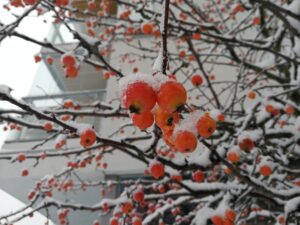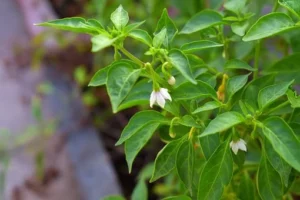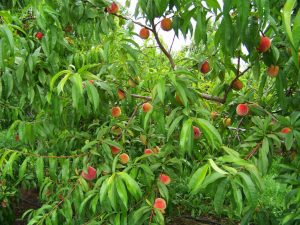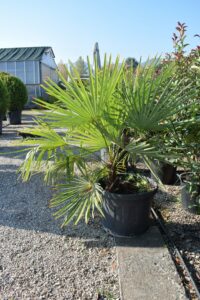
Η Prickly pear (Opuntia ficus-indica (L.) Miller) belongs to the family of cacti (Cactaceae) which includes over 300 species. It comes from Mexico. It was transported to Europe by the Spaniards in 1523 and spread very quickly to the Mediterranean countries due to its delicious fruits. It is grown systematically in Mexico, Algeria, Morocco, Tunisia, Italy, Greece, Turkey, Malta, Israel and South Africa.
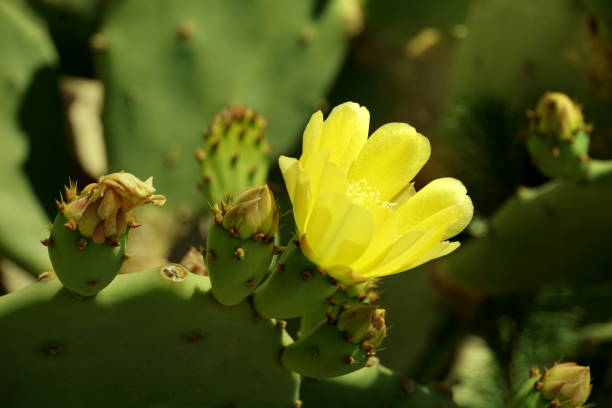
Description of prickly pear
The prickly pear is a cactus-succulent, perennial and arboreal, which can reach 5 m in height. Its real leaves are essentially the spines, which are 1-2 cm long. In addition to these spines, both the leaves and the fruits bear other small spines, the glochides, which are easily detached and stick to the skin causing discomfort and discomfort. Its flowers are single, large (diameter 4-8 cm), sessile and appear at the beginning of May in the periphery of one-year-old fronds. They are bright yellow or orange in color and only stay open for 36-48 hours. The fruit, known as prickly pear or shoe fig, is rail-shaped and spindle-shaped or oval in shape. It is edible, fleshy, with a sweet and pleasant taste and ripens from August to October.

Prickly pear care
The prickly pear is a xerophytic plant, without any particular soil requirements, and prefers dry climates and good exposure to sunlight. It grows even in sandy, stony, poor in organic matter, shallow, dry and arid soils, as long as they have good drainage. It also utilizes the atmospheric moisture which it absorbs and stores in its tissues. It has enough resistance to low temperatures since it can withstand up to -10°C. Its water requirements are limited mainly in winter, but during the flowering and summer period, a regular irrigation is recommended.
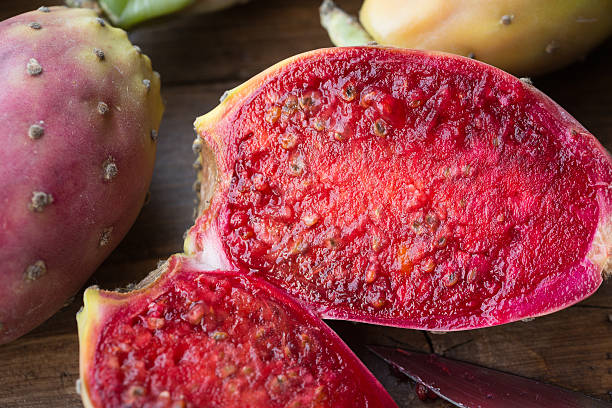
Prickly pear ingredients
Prickly pear has an impressively high content of copper, potassium, calcium and magnesium. It is low in saturated fat, has no cholesterol and sugar, and its sodium content is very low. In addition, it has high levels of flavonoids, polyphenols and antioxidants which act protectively on various tissues and organs, such as arteries, nerves, eyes and joints. Prickly pear because of the fiber and pectin it contains can lower blood glucose by reducing the absorption of sugar in the stomach and intestines.
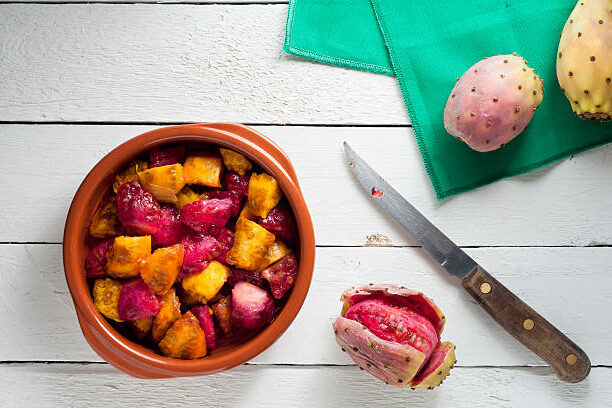
Uses of prickly pear
The uses of prickly pear are as follows:
- Fresh fruit: In Cyprus its consumption is very widespread. In the market, gross with thorns or without thorns is available, while in recent years it is also available cleaned and packaged. You can find them on the market from mid-June until the end of October.
- Oil: The oil derived from the seeds is used in the cosmetics industry mainly for the anti-wrinkle action it is considered to have.
- Food products: Prickly pear fruits are used in various food products such as sweets, jams, compotes, alcoholic beverages and ice creams.
- Diet drinks: Dried prickly pear powder is used in the preparation of diet drinks.
- Vegetable: The sprouts can be cooked and eaten as a vegetable. This use is widespread in Mexico.
- Feed: The shoots (leaf branches), after removing their thorns by scorching, can be used as feed. Their use in farm animal nutrition is widespread in various countries such as South Africa, Mexico, Brazil, the USA and North African countries.
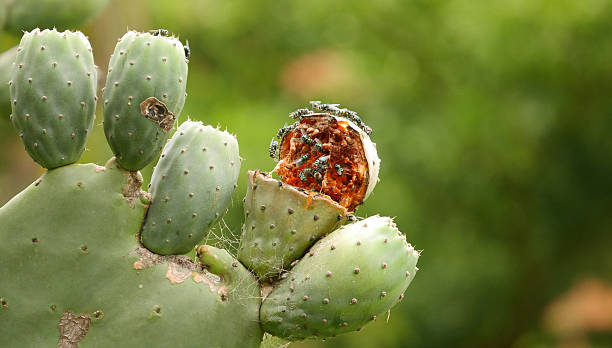
Diseases and enemies of prickly pear
The prickly pear is infested by the Mediterranean fly (Ceratitis capitata) on fruits that have been allowed to ripen sufficiently. Fruits are also eaten by mice and snails. Excess water in the soil and poor drainage cause root rot due to attack by fungal diseases.


